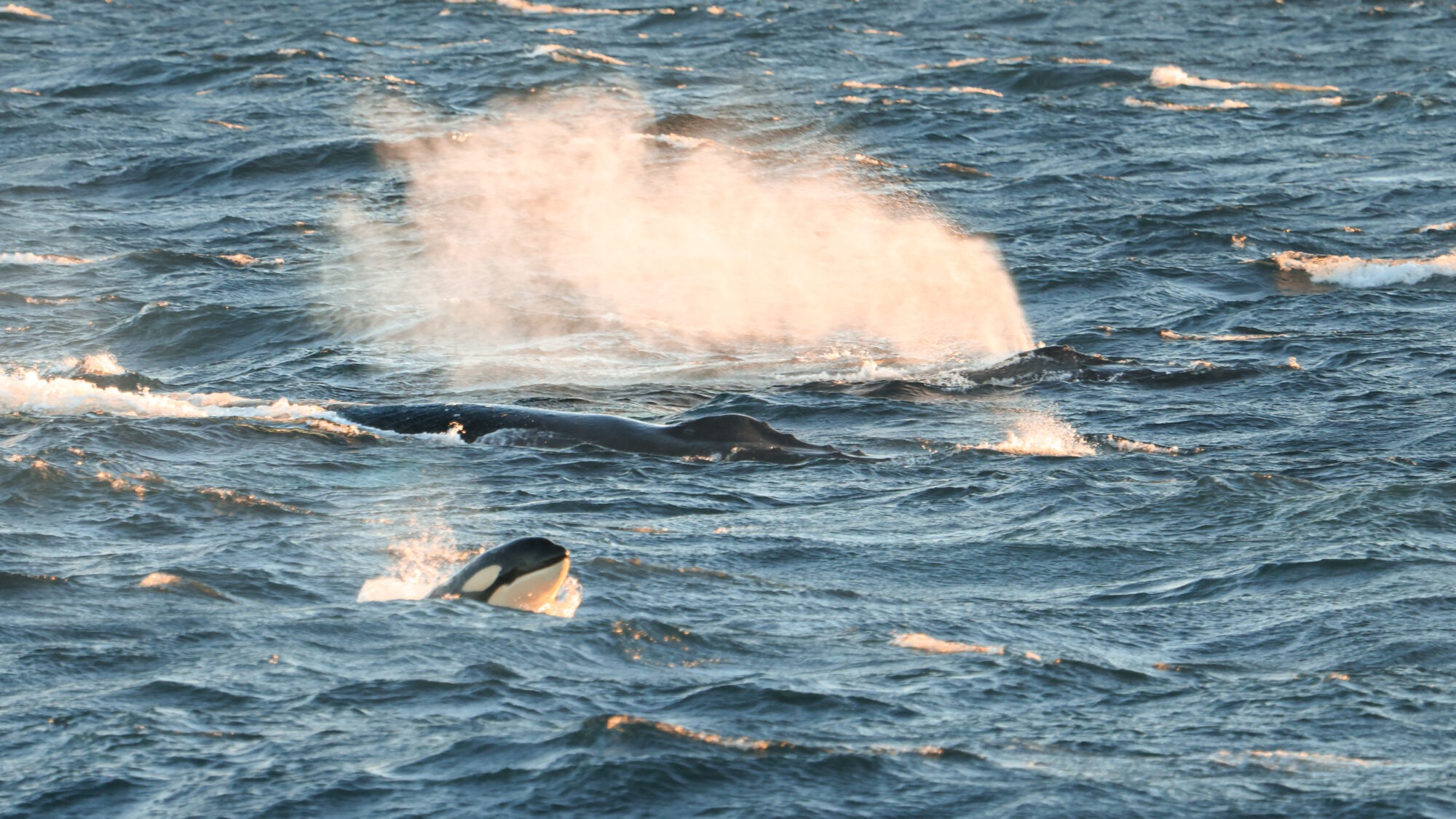In many areas and especially in the media and well-known nature films, the relationships between whales and orcas are depicted as lifelong enemies. This starts with continuing to use the name Killer Whale instead of Orca. Read more about this in my previous blog.
“So, these animals are actually part of very clever marketing.”
And by continuing to call Orcas the name Killer whale, it creates extra tension, sensation and therefore interest from people. This is a bit the same as the chosen color red for a message notification on your phone. The color red quickly attracts attention. Red represents excitement, passion, danger, energy and action. This makes you more likely to press the button or take action. The same thing happens in our heads with the word Killer. Subconsciously this attracts our attention and we are more inclined to watch a fragment with this title. So, these animals are actually part of very clever marketing.
So, in order to generate more views for your documentary or nature film, it is important to portray the Orca as a Killer. In order not to disappoint the audience and to arouse the following emotions (excitement, passion, danger, energy and action). So, before I continue with the blog. And now I am very curious and I want to do a little test with you, I would like to ask you “which word attracted you to read this blog post”? Was that the word Whale or the word Orca? And would you please mention this word in the comments, thanks in advance.
“So, I would like to tell you a little more about a relationship between whales and orcas that is not often told.”
And yes, in some parts of the world, whales are on the Orca’s menu. But not everywhere, like in Northern Norway. “So, I would like to tell you a little more about a relationship between whales and orcas that is not often told.”
In the fjords of Northern Norway, during the winter, also known as the herring season, 3 different ecotypes of Orca enter the fjords to feed on HERRING! And not only Orcas but also other Marine Mammals (including several whale species) are attracted into the Fjords for the Herring feast. There are several ecotypes of Orca around the world. (see first image) The three ecotypes that we encounter in the fjords are Type 1, Type 2 and the Offshores. All these 3 species of Orcas have fish as their primary food source and only the Offshore’s are known to eat the occasional shark.
The hunting technique of these 3 Orca species is therefore completely specialized and fine-tuned for collecting and hunting fish, also called carousel feeding. (I will explain this technique in a next blog.) And not with hunting whales, because this requires very different techniques and cooperation of the animals.
But to return to the relationship between whales and Orcas in the fjords of Northern Norway.
Over the years in the fjords, we have been able to observe the interactions between Orcas and Whales up close and for longer periods during our expeditions. And what I think is so beautiful is that we see a friendly collaboration between the Orcas and Whales. And yes, sometimes there is even interaction between the two species.
The relationship that mainly occurs on a daily basis in the fjords is that of: The Orcas collect the fish in a ball, also called a baitball. And because the Orcas communicate a lot while making the baitball, this is like a kind of dinner bell for the whales. An easy meal for the whales that requires little effort. When a baitball is formed in the area by the orcas, we see the whales swimming from different directions at high speed towards that location. To then rise up under the baitball and eat a large part of the ball with one bite.
You would think that the Orcas would not only have the fish to eat, but would also be able to call the whales to them for a “Whale Snack”. But to hunt a whale, the orca’s not only need to master different techniques. This also costs a lot more energy. And it is not without reason that Orcas are known for working as efficiently as possible. It is also true that the herring is so rich in fats in the winter season that this is even the period when the females consciously choose to give birth to their young. And don’t choose a warmer season, but a nutrient-rich season. (More about this soon.)
“if we are lucky, we sometimes see the interaction between the Orcas and Whales continue.”
But after a joint feeding, “if we are lucky, we sometimes see the interaction between the Orcas and Whales continue.” And what we have observed several times is that young individuals of both species seek interaction with each other. And during these interactions, often show their bellies to each other. Also known as the most vulnerable parts of the animals. (Think of the behavior of a submissive dog.) Orcas sometimes try to grab the whales fins with their mouths. And this immediately sounds very aggressive to us humans, because you don’t bite another person and certainly not a person you don’t know or just met. “At least I don’t.” But remember that these animals have no hands to shake hands or feel or examine each other. And the whale’s fluke is also the furthest from the whale’s mouth, so it is safest for the Orca to approach without running too much risk. And finally, grabbing with the mouth is a natural behavior that is often seen in Orcas from the mother animals to the calf, to examine and get to know each other in the early stages of the calves.
This shows that there is certainly no aggression but more exploratory and play behavior between both species. These interactions are often short an badly documented but give us a nice insight of how different species, although mortal enemies in several parts of the world, can still work together and have no fear of each other, in other parts of the world.
Debbie Bouma, Marine Mammal Behavior Expert, Assistant Expedition Leader.






Really nice written. With some parts we had the same experiences in Norway! It’s so beautiful!
Wonderfully written and optimistic that we can change the way people perceive both orcas and whales, as amazingly smart and able to coexist peacefully in Norway! Makes me want to come back soon to snorkel with both😍🐋